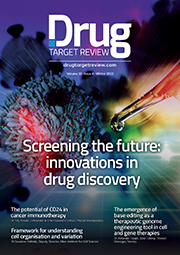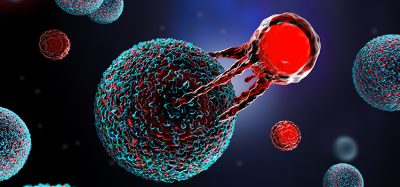Automated assessment of Liver and Cardiac toxicities in lead optimisation, using biochemical and human iPS cell assays
ABOUT THIS WEBINAR:
In this two-part webinar, both automation of P450 (CYP) assays and the automatisation of cellular differentiation processes and compound testing using human induced pluripotent stem cells based assays was covered.
Metabolism of drugs is a key factor in compound toxicity, and automated assays which monitor inhibition or induction of members of the cytochrome P450 (CYP) superfamily of enzymes are a key ADME readout during lead optimisation.
This webinar will describe a 384-well microplate format assay using three different CYP enzymes, with two approaches, illustrating a typical assay run in an ADME laboratory. The CYP profiling was performed on the Fluent 780 assay workstation in an automation process designed to reduce reagent consumption and make tip usage as efficient as possible. Prediction of toxicity of small molecule chemicals is essential during drug development and evaluation of industrial chemicals. Human induced pluripotent stem cells (hiPSC) and derived cellular products, e.g. hiPSC-derived heart, liver or brain cells, provide new concepts and possibilities to generate tissues that could be physiologically more relevant and therefore predictable and scalable to sufficient quantities for analysis of toxicological features. The automatisation of cellular differentiation processes and compound testing could enable a stable and scalable solution for toxicity assessment.
In the second part of the webinar, adaptation and automatisation of the differentiation process for hiPSC-based cardiomyocytes will be discussed. The differentiation occurs directly in 96-well format screening plates. Moreover, two endpoint assays – based on ATP detection and intracellular calcium transient visualisation – for the cardiotoxicity assessment were adapted and automated in addition to performing manual beating analysis. As proof-of-concept to evaluate the established platform, inhibitors of the non-selective cation channel TRPM4, which are currently being developed at Fraunhofer IME to target the neurodegenerative disease multiple sclerosis, were tested using the platform technology presented here. We have shown that hiPSC-cardiomyocytes express TRPM4 after a 14-day differentiation protocol to a similar extend than human cardiomyocytes from explants. The presented automated system therefore appears to be suitable for assessing both toxicity and impacts on functional performance of human cardiomyocytes in early stage drug discovery or similar applications.
KEYNOTE SPEAKERS:
Philip Gribbon – Assistant Head of Department, Fraunhofer IME ScreeningPort.
 At the Fraunhofer Institute of Molecular Biology and Applied Ecology (IME), Hamburg, Germany, Philip leads a team of chemists, biochemists, biologists, technologists and bioinformaticians across four organisational lines: Drug Discovery; Enabling Technologies, Biomarker and Translational Research, and R+D Information Technologies. From 2014 to 2018 he coordinated the European Infrastructure for Chemical Biology, EU-OPENSCREEN. Between 2008 and 2014, Philip was Chief Scientific Officer of the European ScreeningPort GmbH. Hamburg, where he set up an integrated platform for small molecule drug discovery and translational research. Prior to this, he was a manager in an internal GSK technology consulting team, working across company divisions from early Discovery through to Manufacturing. From 2000 to 2005 he was a Principle Scientist at Pfizer, screening compounds against a wide range of targets to meet the hit finding needs of multiple therapeutic areas. Before entering industry, from Philip was a Post-Doc at the University of Manchester studying molecular interactions within and between biological polymers involved in the mechanical stabilisation of connective tissues. He received his PhD in Biophysics from Imperial College London.
At the Fraunhofer Institute of Molecular Biology and Applied Ecology (IME), Hamburg, Germany, Philip leads a team of chemists, biochemists, biologists, technologists and bioinformaticians across four organisational lines: Drug Discovery; Enabling Technologies, Biomarker and Translational Research, and R+D Information Technologies. From 2014 to 2018 he coordinated the European Infrastructure for Chemical Biology, EU-OPENSCREEN. Between 2008 and 2014, Philip was Chief Scientific Officer of the European ScreeningPort GmbH. Hamburg, where he set up an integrated platform for small molecule drug discovery and translational research. Prior to this, he was a manager in an internal GSK technology consulting team, working across company divisions from early Discovery through to Manufacturing. From 2000 to 2005 he was a Principle Scientist at Pfizer, screening compounds against a wide range of targets to meet the hit finding needs of multiple therapeutic areas. Before entering industry, from Philip was a Post-Doc at the University of Manchester studying molecular interactions within and between biological polymers involved in the mechanical stabilisation of connective tissues. He received his PhD in Biophysics from Imperial College London.
Dr. Ole Pless – Head of Biomarker and Translational Drug Discovery, Fraunhofer IME ScreeningPort.
 Since 2014 Dr. Ole Pless heads the biomarker and translational drug discovery activities at Fraunhofer IME ScreeningPort for different target and indication classes. He is a project coordinator and project leader for several projects funded by the European Commission, the German Federal Ministry of Education and Research (BMBF) or other with a focus on translational research for neurodegenerative diseases, cardiac/metabolic diseases, and human induced pluripotent stem cell technology for drug discovery. From 2011-2014 he was heading similar activities for the European ScreeningPort GmbH, a small and medium sized enterprise for small molecule drug discovery and translational research. Dr. Pless holds a PhD in molecular biology from the Max-Delbrück-Center for Molecular Medicine and the Humboldt University in Berlin and has specialized in transcription factor biology, epigenetics and leukemia research during his Post-Doc. Dr. Pless is a lecturer in molecular neurobiology at the University of Hamburg and at the Goethe-University Frankfurt. He acts a reviewer for international peer reviewed journals (PLOS ONE, Journal of Biological Chemistry, Molecular and Cellular Biology, Journal of Biomolecular Screening).
Since 2014 Dr. Ole Pless heads the biomarker and translational drug discovery activities at Fraunhofer IME ScreeningPort for different target and indication classes. He is a project coordinator and project leader for several projects funded by the European Commission, the German Federal Ministry of Education and Research (BMBF) or other with a focus on translational research for neurodegenerative diseases, cardiac/metabolic diseases, and human induced pluripotent stem cell technology for drug discovery. From 2011-2014 he was heading similar activities for the European ScreeningPort GmbH, a small and medium sized enterprise for small molecule drug discovery and translational research. Dr. Pless holds a PhD in molecular biology from the Max-Delbrück-Center for Molecular Medicine and the Humboldt University in Berlin and has specialized in transcription factor biology, epigenetics and leukemia research during his Post-Doc. Dr. Pless is a lecturer in molecular neurobiology at the University of Hamburg and at the Goethe-University Frankfurt. He acts a reviewer for international peer reviewed journals (PLOS ONE, Journal of Biological Chemistry, Molecular and Cellular Biology, Journal of Biomolecular Screening).
Hal Wehrenberg – Head Product Management, TECAN
 Hal is the Head of Product Management and has been at Tecan for the last eleven years. Before he began at Tecan he was an independent freelance computer programmer. This allowed him to gather a wide range of experience working from concept and project definition to final full implementation of a wide range of solutions. This has been invaluable in his roles at Tecan, where most of his work involves guiding the development of the Fluent platform to more effectively meet their customers’ business needs.
Hal is the Head of Product Management and has been at Tecan for the last eleven years. Before he began at Tecan he was an independent freelance computer programmer. This allowed him to gather a wide range of experience working from concept and project definition to final full implementation of a wide range of solutions. This has been invaluable in his roles at Tecan, where most of his work involves guiding the development of the Fluent platform to more effectively meet their customers’ business needs.
The rest of this content is restricted - login or subscribe free to access
 Thank you for visiting our website. To access this content in full you'll need to login. It's completely free to subscribe, and in less than a minute you can continue reading. If you've already subscribed, great - just login.
Thank you for visiting our website. To access this content in full you'll need to login. It's completely free to subscribe, and in less than a minute you can continue reading. If you've already subscribed, great - just login.
Why subscribe? Join our growing community of thousands of industry professionals and gain access to:
- quarterly issues in print and/or digital format
- case studies, whitepapers, webinars and industry-leading content
- breaking news and features
- our extensive online archive of thousands of articles and years of past issues
- ...And it's all free!
Click here to Subscribe today Login here
Related topics
Assays, Drug Discovery Processes, Hit-to-Lead, Lab Automation, Personalised Medicine, Screening, Stem Cells, Translational Science
Related organisations
Tecan








